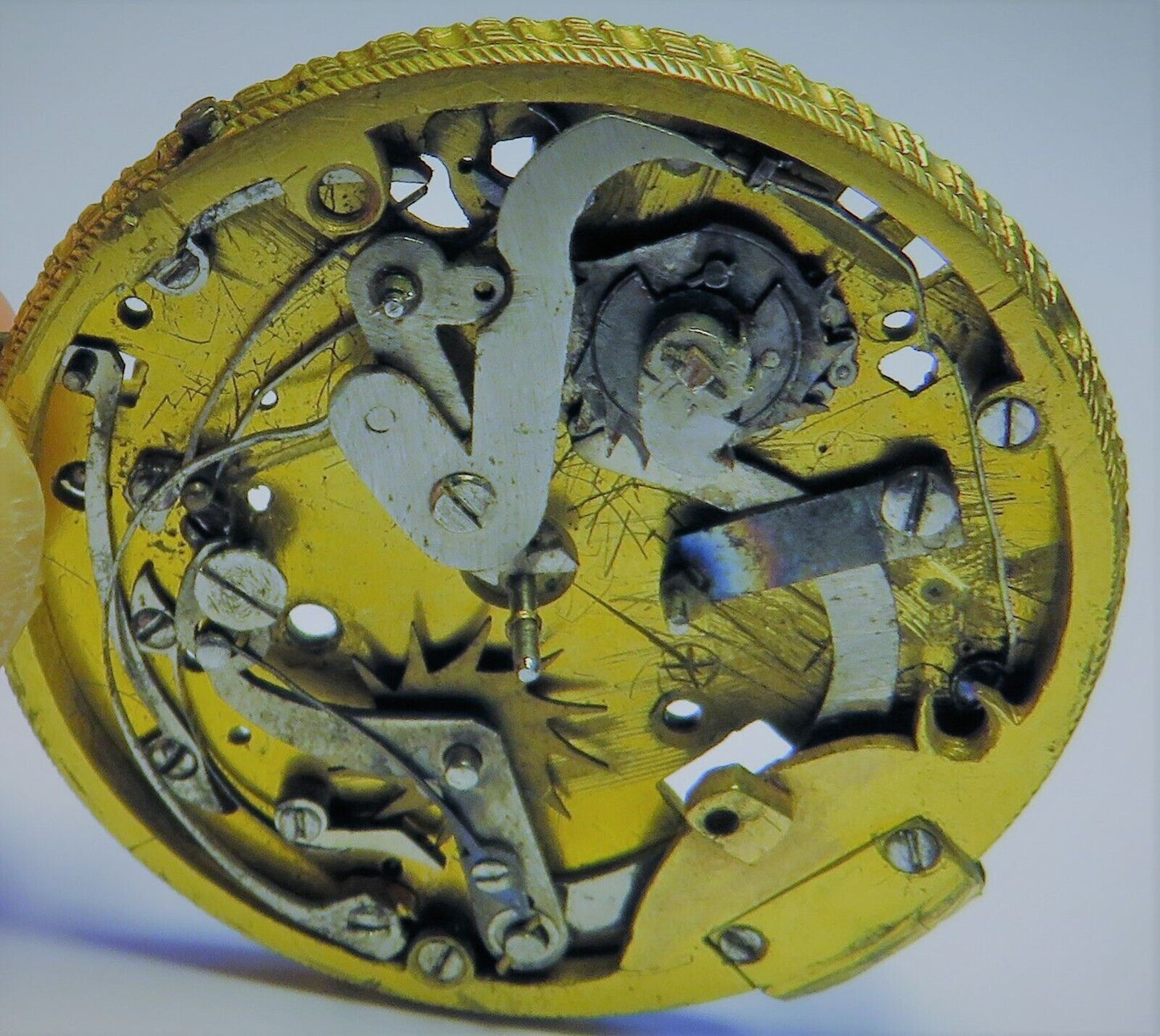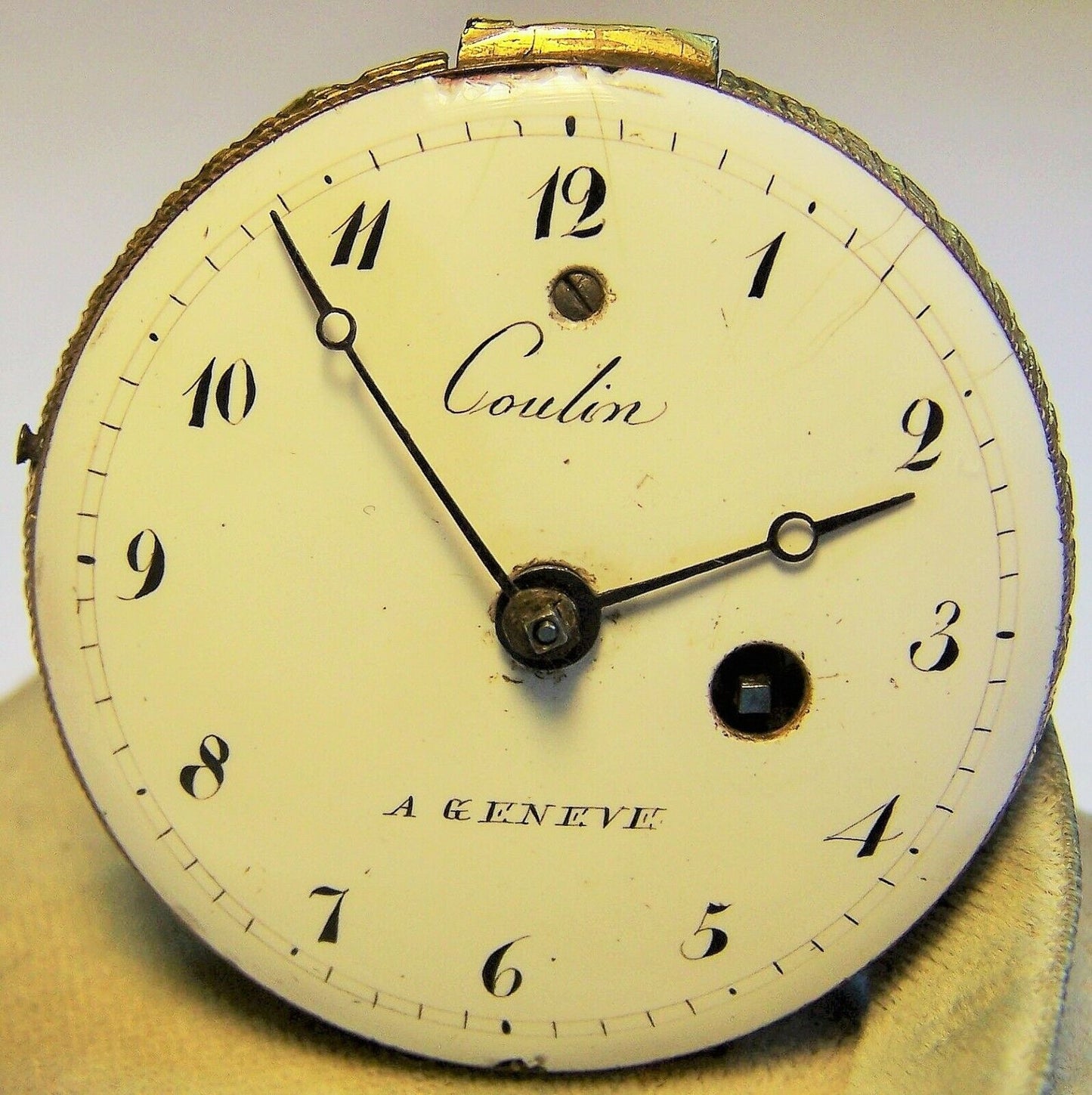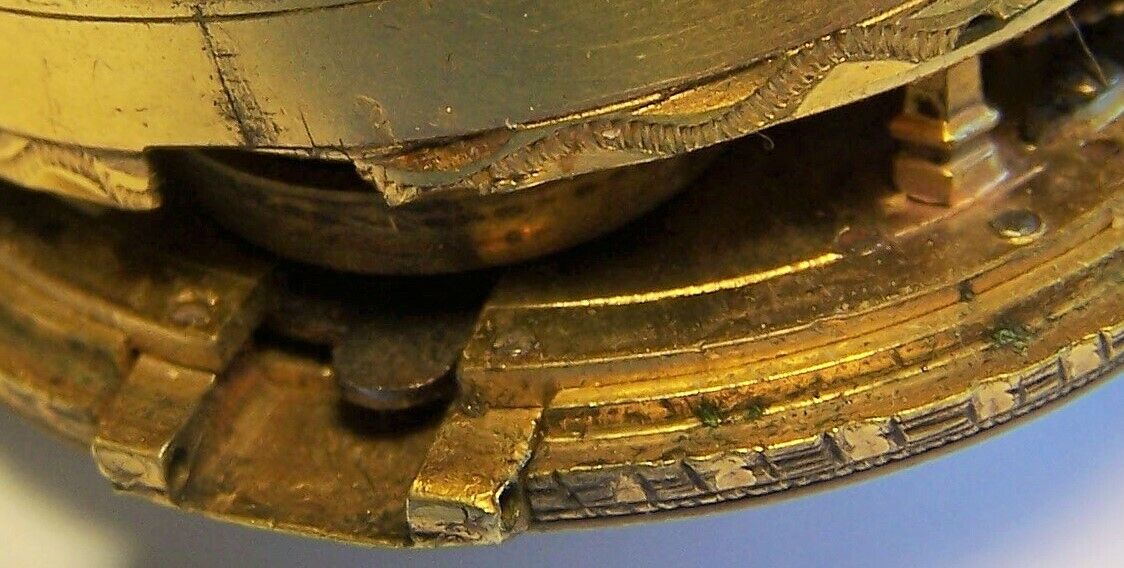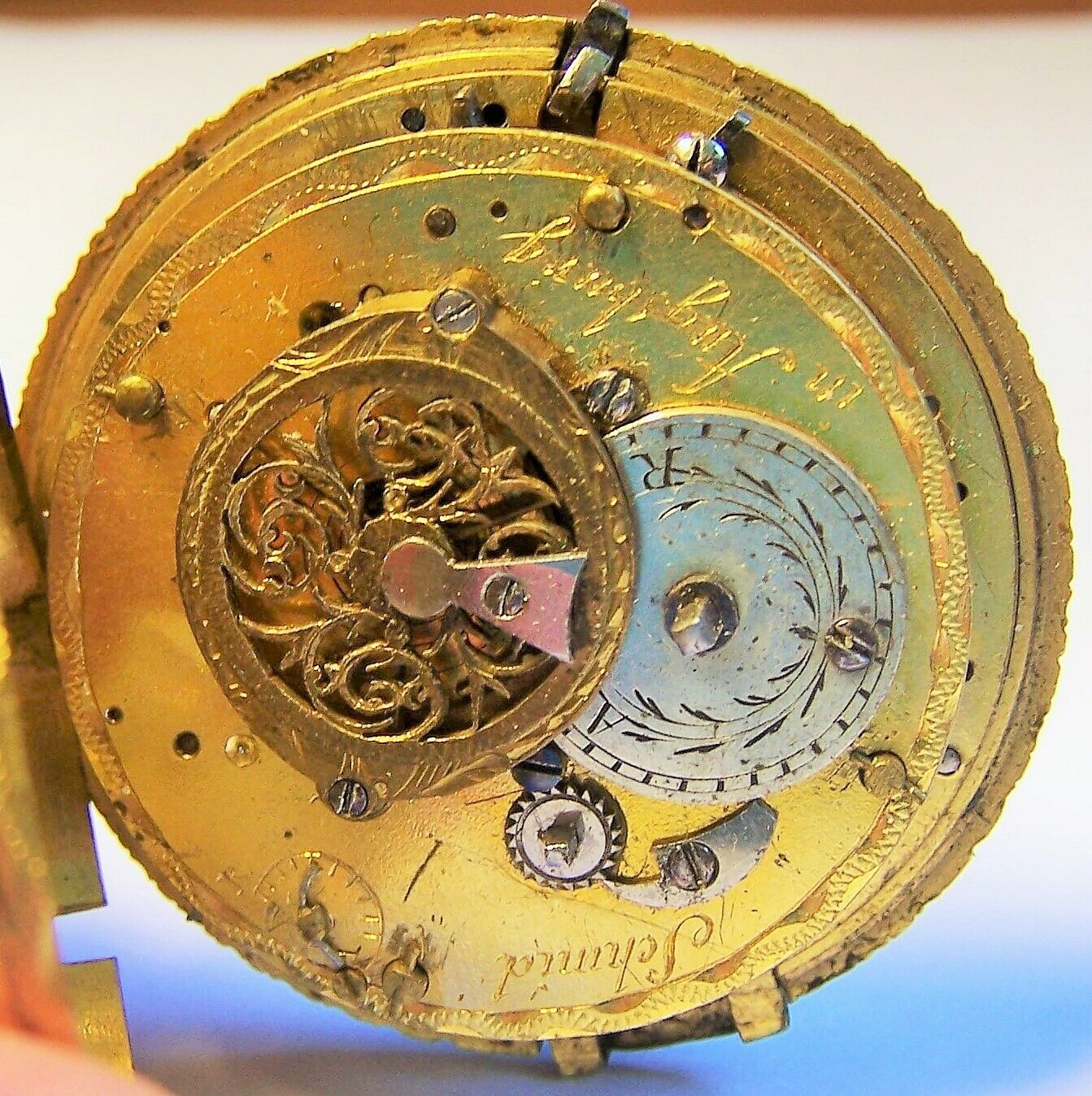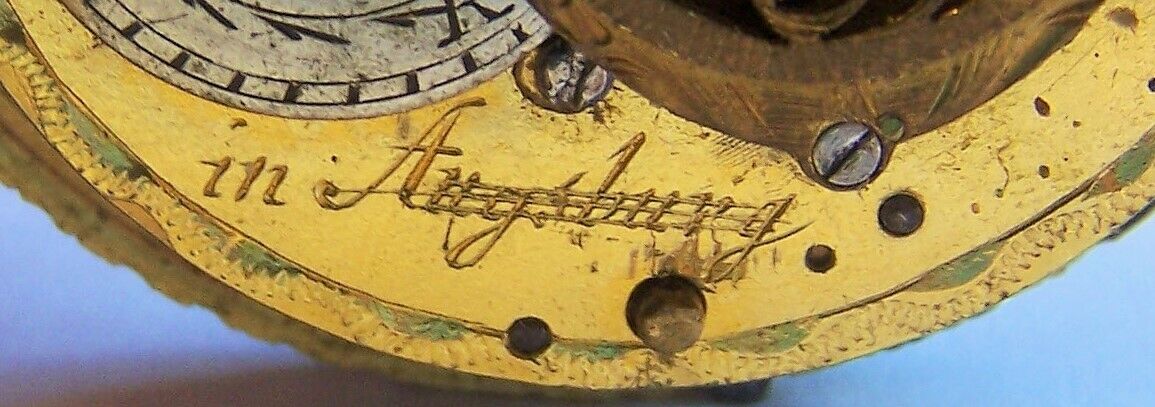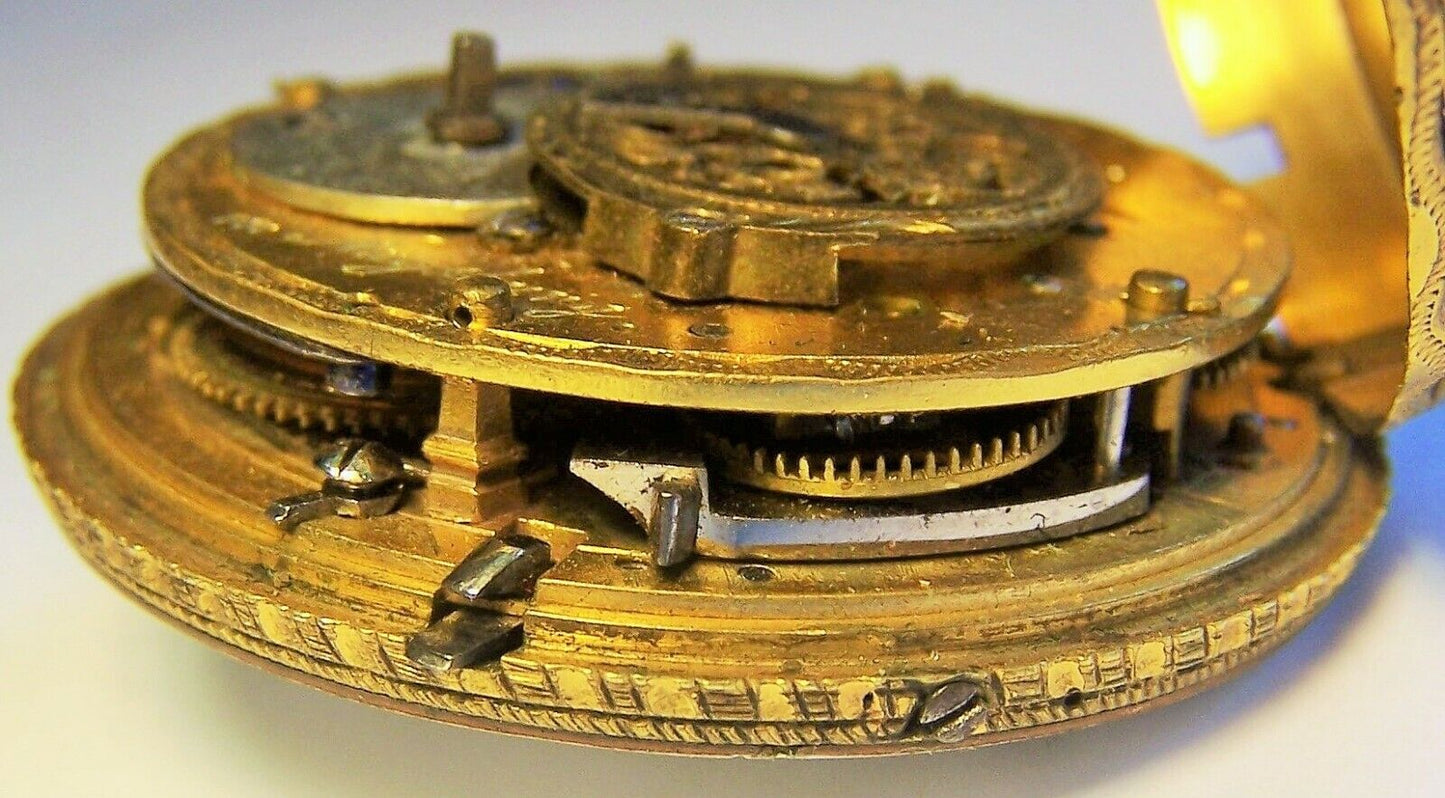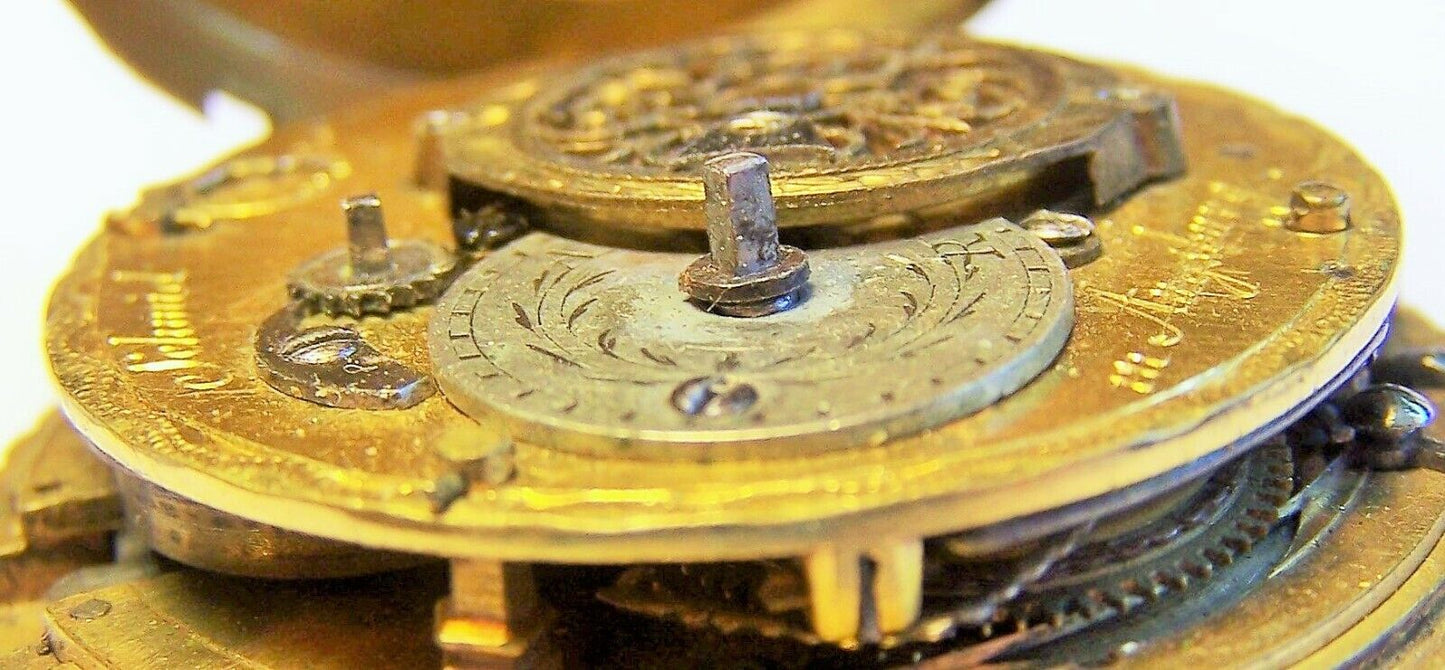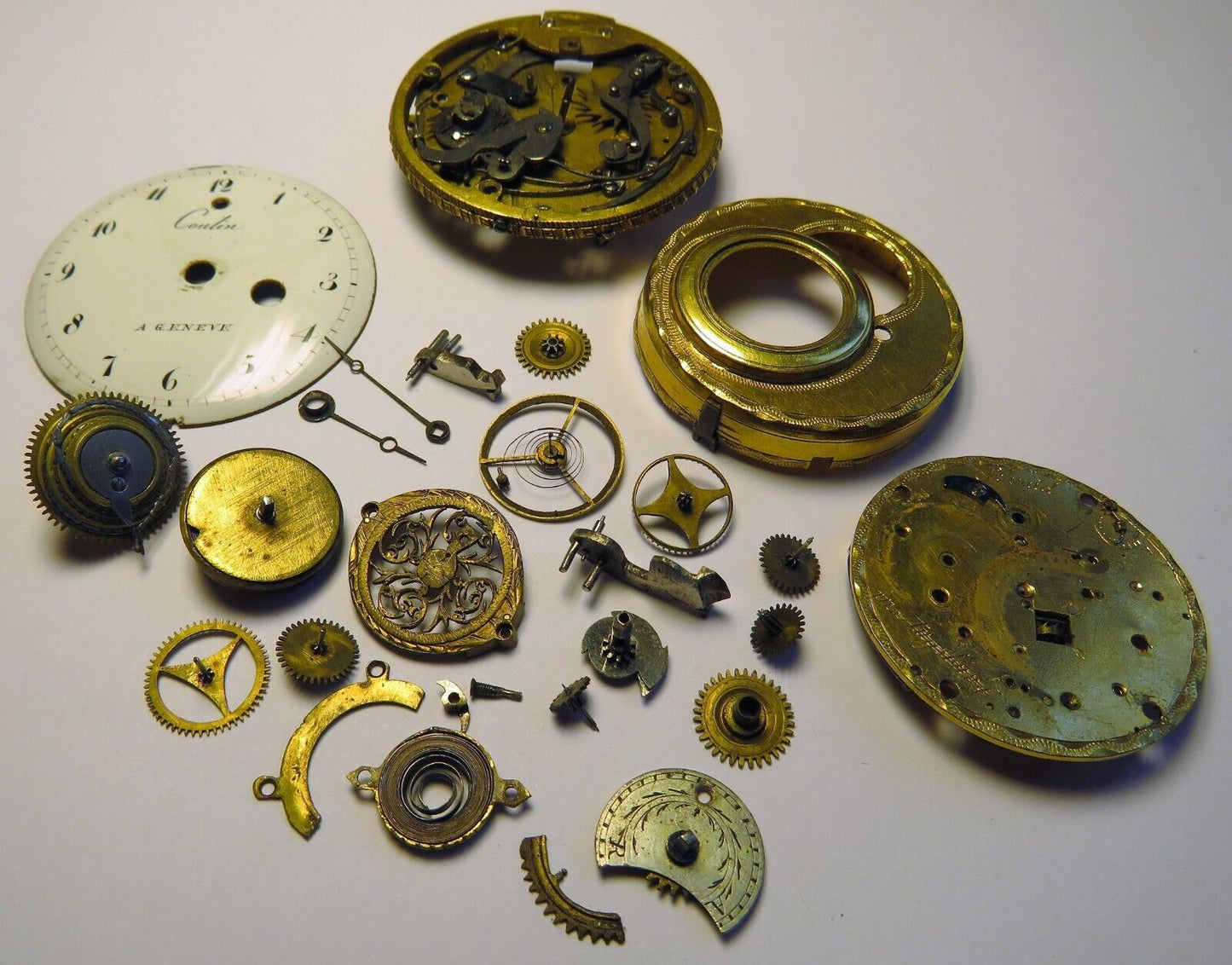1
/
of
12
Nikolaus Schmid Augsburg
World sensation! First repeater pocket watch movement in the world, Schmid Augsburg 1595
World sensation! First repeater pocket watch movement in the world, Schmid Augsburg 1595
Regular price
€995,00 EUR
Regular price
Sale price
€995,00 EUR
Keine Umsatzsteuer ausgewiesen wegen Differenzbesteuerung
Couldn't load pickup availability
The clockwork of this offer could/should be a world sensation!
Possibly/presumably this is the first repeater pocket watch in the world, created decades before the first known repeater pocket watch in watch history was presented
Again, with the discovery and documentation of the existence of this movement by Nikolaus Schmid / Augsburg, the history of watches will probably have to be changed and rewritten in the area of repetition!
First of all, the museum artifact in this offer is a watch that actually shouldn't exist: a repeater pocket watch from around 1590 - 1620, built by the well-known German watchmaker Nikolaus Schmid the Elder, who lived and worked in Augsburg from 1549 to 1629.
Officially, however, the first repeater pocket watch was not invented until the end of the 17th century. What is certain is that in an arbitration award to King James II of England in 1687, the patent for a pocket watch with hour and 1/4-hour repeater striking mechanism was awarded to Daniel Quare (1649–1724).
I don't want to sell this unique piece of watch history here—it will end up in a museum anyway—because it's worth either a fraction of the listed price or a dozen times more. My goal is to use eBay's global reach to gather as much information as possible about this museum-worthy piece.
This unique piece of watch history has now been disassembled and examined for a year by German watch restoration legend Rolf Lang in Glasshütte. Rolf Lang is one of only three certified watch restorers in Germany. Lang is the owner of the last remaining German watch manufacturer, was chief restorer of the Blue Salon in Dresden – the world's premier museum of technology history – and head of prototype construction at Lange & Söhne in Glashütte for 15 years.
Rolf Lang's expert opinion is: yes, this is a genuine Nikolaus Schmid Augsburg and yes, it is a repetition work, which is already an absolute sensation for Nikolaus Schmid's lifetime
Rolf Lang considers the work to be well preserved and capable of restoration, but this would cost many thousands of euros, as some parts, such as a gong or bell, would have to be remade and fitted by hand. Such costs can only be met by the museum where the unique piece will eventually end up.
First the facts: Nikolaus Schmid the Elder lived from 1549 to 1629 at the latest. It is a fact that Schmid mastered the art of building filigree repeater clockworks, as he is proven to have built a small table clock with quarter repeater as early as 1590, which is still preserved today and is in the museum.
The movement of the artifact of this "offer" is clearly by Nikolaus Schmid the Elder, fully signed and it definitely has a repeater mechanism, although currently not functional because the movement is not running and the gong or bell as well as the trigger of the repeater are missing
It could also be an hourly strike function with 2 hammers, in which case the movement would still be unique due to its age, size and provenance, but again: it is proven that Nikolaus Schmid mastered the construction of the smallest quarter repeaters at the end of the 16th century.
Dial is signed "Coulin Geneve", Coulin was a well-known watchmaker from the 18th century, but the dial has absolutely nothing to do with the historical significance of the movement, it was replaced later
Observable details:
- the movement has a chain and is not driven by gut sides, the original chain is still present
- a shaft in the movement appears to have broken or slipped out of the bearing
- at least one wheel seems broken
- Tongue spring or bell and trigger mechanism missing
- the full plate is hand-engraved, also the sub-dial on a seemingly early fine adjustment
- all screws seem to be made of iron, not steel
- Hands are handmade
- the movement protection cover, held by a hand-made hinge, is undoubtedly original, all recesses fit, both hammers have their own openings
- the screws that hold the full plate on the pillars have the typical split pins of medieval pocket clocks
- the spindle cock is not as elaborately crafted and decorated as in later spindle pocket watches, it obviously only had to work
- the well-preserved enamel dial is screwed as usual with pocket clocks
- a very fine chain is already visible, no power transmission through gut strings as in the "Peter Henlein Dosenuhr"
- the condition of the work when found was very compact and sealed, and it was also in the brass casing visible in the photos. It is therefore quite possible that it is complete, which would of course represent an excellent basis for restoration.
A few more facts: Movement diameter: 44mm, gross weight: 55.6g, Arabic numerals, screwed enamel dial, power transmission by chain, internal barrel visible, hands already blued (in the 18th century by Coulin ...?)
I ask everyone, but really every expert, who knows anything about technology, movement, history of repeater movements or one of the two watchmakers Schmid from Augsburg and especially their preserved works (what is located where in which museum?), to get in touch and give me every little hint or link.
Thank you very much for your support. I have made it my mission to solve the mystery and clarify the year of manufacture and origin of this watch. Please refrain from joking bids, insulting price suggestions, and the insults and slurs that are common on eBay - thank you very much!
Of course, any solvent collector can purchase this work at a fair price and have it restored by Rolf Lang. Then he will probably own the first known repeater pocket watch in the world. I can mediate and ensure that Rolf Lang actually accepts the order.
History of the German watchmaker Nikolaus Schmid Augsburg 1549 - 1629 (Source: Wikipedia /Dr. Crott):
Nikolaus Schmidt was born in 1549 in Wiltz, Luxembourg. In 1576 , he set up his own business in Augsburg. In 1620, he married the daughter of the renowned watchmaker Hans Fronmüller.
It is not clear when Nikolaus Schmidt died. It can be assumed that he died after 1625 , but before 1629. His son, Nikolaus Schmidt the Younger, was also a clockmaker. Several of his clocks are exhibited in important museums around the world. For example, a Renaissance table clock from him has survived, which is now owned by the Beyer Clock Museum in Zurich . The Louvre and the Museum of Modern Art in New York also exhibit at least one authentic "Nikolaus Schmid Augsburg" clock.
Nikolaus Schmidt the Elder was born in 1549 in Wiltz, Luxembourg. In 1576, he became a master clockmaker in Augsburg and married the daughter of the renowned clockmaker Hans Fronmüller. His exact date of death is unclear. It can be assumed that he died after 1625, but before 1629. His son, Nikolaus Schmidt the Younger, was also an important clockmaker. Several of his clocks are on display in major museums around the world, including the Metropolitan Museum of Art in New York and the Historical Museum in Basel.
Nikolaus Schmidt the Elder is listed in Jürgen Abeler, "Master of Watchmaking", 2nd edition, Wuppertal 2010, p. 503.
Another table clock with the almost identical lion hunting scene is illustrated in Klaus Maurice, "Die deutsche Räderuhr", Volume 2, Munich 1976, Fig. 511a and is by Gallus Schellhammer from Nuremberg
An offer from the sole proprietorship Reiner Haas, Managing Director is Reiner Haas
Our company is taxed according to the differential taxation method, no VAT is shown in the final price
Cancellation policy
Right of withdrawal
You have the right to withdraw from this contract within fourteen days without giving any reason.
The cancellation period shall expire after fourteen days from the day on which you, or a third party other than the carrier designated by you, takes possession of the goods. To exercise your right of cancellation, you must notify us of your decision to cancel this contract by means of an unambiguous declaration (e.g., a letter sent by post, fax, or email). You may use the sample cancellation form below, but this is not mandatory.
The revocation must be addressed to:
Reiner Haas sole proprietorship
Rennmühle 3A, 91126 Schwabach
To comply with the cancellation period, it is sufficient that you send the notification of the exercise of the right of cancellation before the expiry of the cancellation period.
Consequences of revocation
If you cancel this contract, we will refund all payments that we have received from you, including delivery costs (with the exception of additional costs resulting from your choice of a delivery method other than the cheapest standard delivery offered by us), immediately and at the latest within fourteen days from the day on which we received notification of your cancellation of this contract.
For this refund, we will use the same means of payment that you used for the original transaction, unless something else was expressly agreed with you; under no circumstances will you be charged any fees for this refund.
We may refuse repayment until we have received the goods back or until you have provided evidence that you have returned the goods, whichever is the earlier.
whichever is earlier.
You must return or hand over the goods to us immediately and in any event no later than fourteen days from the date on which you notify us of the cancellation of this contract.
The deadline is met if you send the goods before the expiry of the fourteen-day period. You will bear the direct cost of returning the goods.
You only have to pay for any loss of value of the goods if this loss of value is due to handling of the goods which is not necessary to check their quality, properties and functioning.
If you wish to withdraw from the contract, please fill out this text template and send it back to:
Reiner Haas sole proprietorship
Rennmühle 3A
91126 Schwabach
I/we hereby revoke the contract concluded by me/us for the purchase of the following goods:
…............................................................................................................…................................................................................................................................................................................................................
Ordered on …......................................................
Received on …..................................................
Name of the consumer(s)
…........................................................................................
Address of the consumer(s)
…........................................................................................................….................................................................................................…..........................................................................................................…...........................................................................................................................................
Date and signature of the consumer(s) (only if notification is made on paper)
.........................................................................................................
EU Commission platform for online dispute resolution: https://www.ec.europa.eu/consumers/odr
